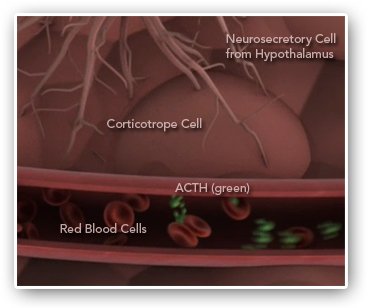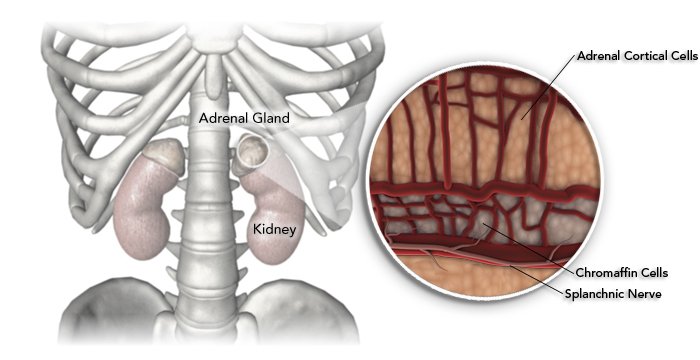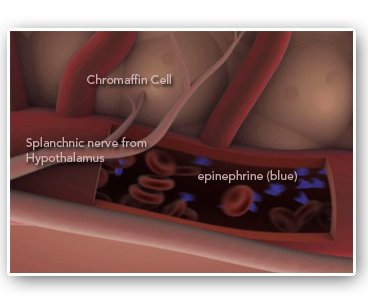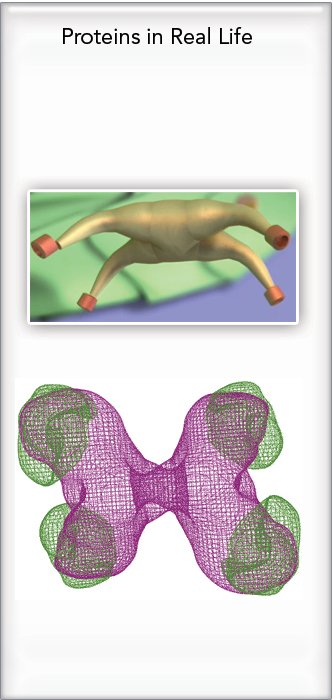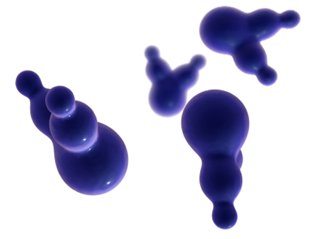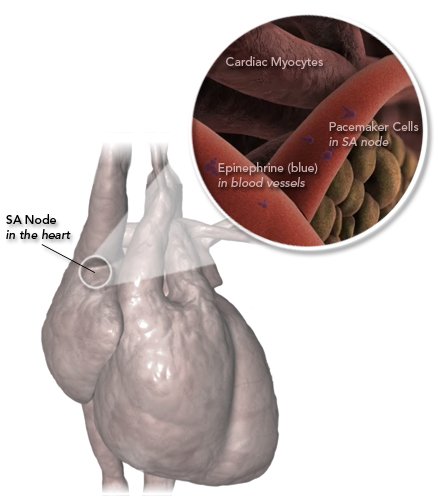When our senses perceive an environmental stress such as danger or a threat, cells in the nervous and endocrine systems work closely together to prepare the body for action. Often referred to as the fight or flight or stress response, this remarkable example of cell communication elicits instantaneous and simultaneous responses throughout the body.
Initiating the Response
Sensory nerve cells pass the perception of a threat, or stress, from the environment to the hypothalamus in the brain. Neurosecretory cells in the hypothalamus transmit a signal to the pituitary gland inciting cells there to release a chemical messenger into the bloodstream. Simultaneously, the hypothalamus transmits a nerve signal down the spinal cord. Both the chemical messenger and nerve impulse will travel to the same destination, the adrenal gland.
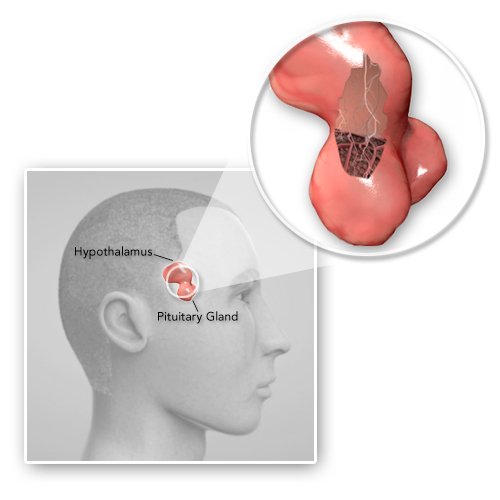
Specialized nerve cells descend down from the hypothalamus into the pituitary gland.
Illustration not drawn to scale.